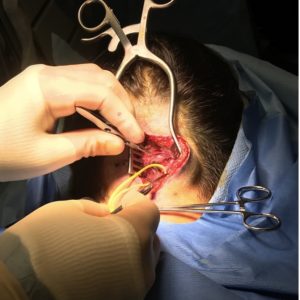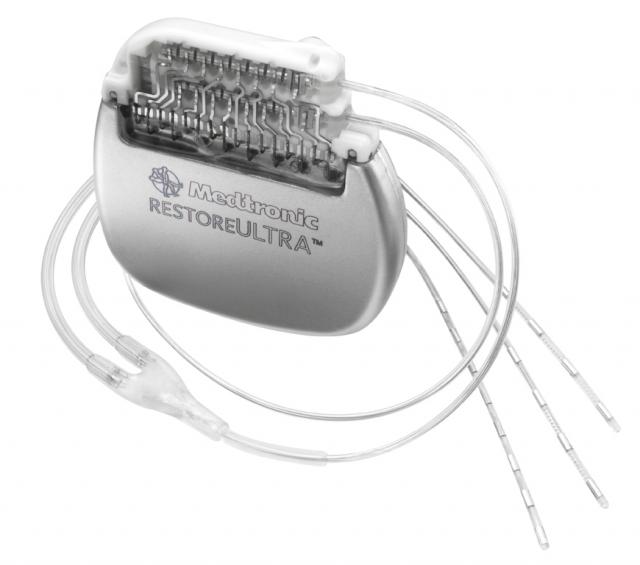Recently I have found a lot of confusion between migraine surgery and nerve stimulator placement. When discussing surgery with patients or answering their questions online, it seems clear that some patients think they have had migraine surgery but describe the placement of wires and the use of remotes… none of this is used in migraine surgery.
Nerve stimulators are small units that are usually placed by pain doctors or neurologists in a small “surgical” procedure. Nerve stimulators can be used for many different types of pain, from migraines to lower back pain and even limb pain. The concept of these stimulators is that electric impulses are given to inflamed nerves to overpower their usual signal and prevent them from sending their usual signal of pain to the brain. While these stimulators do in many cases work, their placement involves a bit of guesswork as the wires that conduct the electrical impulses are usually placed “in the region” of the nerve rather than directly at its precise location.
This placement can be a bit problematic though because nerve travels a bit differently in everyone. Just like the shape of your nose is different than everyone else, the shape of the route your nerve takes is likely a bit different than someone else. Additionally, unlike migraine surgeons such as myself, the neurologists and pain doctors that place nerve stimulators have not spent as much time actually visualizing the actual nerve, as we do in surgery. Their understanding of where the nerve is relies on textbooks and maybe a few dissections in training. Recent studies have actually compared the true anatomy of some very important nerves relating to migraines to their description in textbooks. The study found that the classic description was quite incorrect and that the nerve is found up to several centimeters away from it’s previously described location. If a nerve stimulator is being placed by textbook localization, it may never get a chance to work as the nerve may be too far away to receive the stimulator impulses.
How is Migraine Surgery Different than using a Nerve Stimulator?

Dr. Lowenstein performs migraine surgery on a patient’s occipital nerves.
Migraine surgery is a very different procedure than the one used in nerve stimulator placement. Migraine surgery is usually performed by surgeons familiar with the exact expected course of the nerve, and who are familiar with the microvascular techniques associated with surgery on small nerves and blood vessels. Our goal as migraine surgeons is to find the nerve itself and evaluate where the irritation and compression of that nerve are located. It is this irritation and inflammation from surrounding structures that often causes the “distress signals” of pain that trigger a migraine headache in the brain. These surrounding structures can be muscle, connective tissue, bone, or sometimes small blood vessels. Migraine surgery decompresses these areas and frees the nerve from the surrounding tissues that cause the inflammation. A relaxed path is made for the nerve and by “decompressing” the nerve, the irritation and inflammation are relieved. The distress signals are no more. The migraine headache never gets triggered in the first place.
This is not to say that nerve stimulator are bad- they do work for many people and involve a much easier procedure for placement. In patients for whom nerve stimulators work, they are fantastic and if your neurologist or pain specialist feels that placement of one of these devices is in order, you should certainly consider it. It is important however not to confuse the placement of a nerve stimulator with migraine surgery or decompression surgery for occipital neuralgia. Migraine surgery has a 90% success rate and does not require “readjustment” or “lead positioning” or “remote monitoring” like nerve stimulators may. Migraine surgery does not involve the implantation of anything, and so there is no foreign body left in your body with migraine surgery. Instead, migraine surgery allows for the natural systems in your body, specifically your peripheral nerves, to work more properly free from the irritation and inflammation that cause migraine headaches in so many patients.
If you have had nerve stimulators in the past and have found them to be unsuccessful, please realize that you still have options, that you have not had true migraine surgery, and that migraine surgery in many many cases works well in patients like you who have tried so many other things without success.
For more information on migraine surgery, click here.
To see photos of migraine surgery, click here.
To contact us at Migraine Surgery Specialty Center and find out more information about migraine surgery, click here or call us at 805-969-9004.

